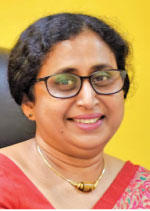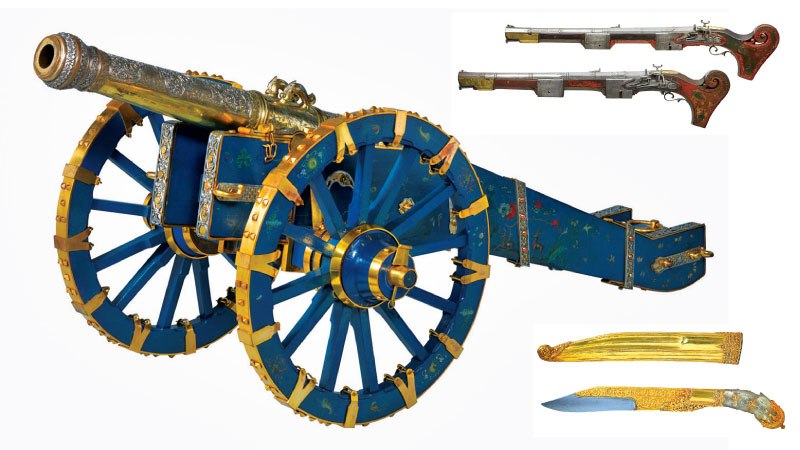In an exclusive interview with the Sunday Observer, Director General of the Colombo National Museum Sanuja Kasthuriarachchi details the historical importance of the Kandyan Era objects recently returned by the Netherlands after extensive negotiations and studies, with an open invitation for all Sri Lankans to visit the Museum and see the precious objects.
Excerpts from the interview:

Sanuja
Kasthuriarachchi
Q: What does the return of the valuable artefacts from the Netherlands signify for Sri Lanka in terms of cultural heritage and its global significance?
A: The return of these artefacts signifies a significant moment for Sri Lanka in terms of cultural heritage and global significance. It represents the reclaiming of cultural symbols that were taken during a historical event, the siege of the Palace of Kandy in 1765. The return of these priceless objects restores a sense of pride and connection to the country’s past, highlighting the importance of preserving and acknowledging its rich cultural history on the global stage.
Q: Could you elaborate on the collaborative efforts involved in confirming the provenance of these artefacts, bridging historical gaps between Sri Lanka and the Netherlands?
A: The collaborative efforts involved in confirming the provenance of these artefacts were extensive and international. The joint research, conducted under the Pilot Project Provenance Research on Objects of the Colonial Era (PPROCE) of the Rijksmuseum of the Netherlands, brought together eminent researchers from both Sri Lanka and the Netherlands. The involvement of experienced experts, historians, and institutions from both countries helped bridge historical gaps, dispelling myths and ambiguities surrounding the Kandyan artefacts.
Q: How do these returned artefacts enrich the narrative of Sri Lanka’s history and contribute to the country’s cultural identity?
A: The returned artefacts enrich the narrative of Sri Lanka’s history by providing tangible links to its past, specifically the Kandyan Kingdom. These objects, including the golden and silver kasthãnés, the intricately crafted knife, and the wall guns, contribute to the country’s cultural identity by showcasing the craftsmanship, artistry, and unique traditions of the 18th-century Kandyan Period.
Q: Could you shed light on the educational and knowledge-sharing aspects these artefacts offer to both local and global audiences?
 A: The returned artefacts now housed at the Colombo National Museum offer educational and knowledge-sharing opportunities for both local and global audiences. They serve as tangible historical evidence, allowing researchers, scholars, university and school students and the public to study and understand the artistic value, technology, and cultural context of the Kandyan objects. Collaborative initiatives between Dutch and Sri Lankan institutions, focusing on the exchange of technical expertise and education, will further enhance this knowledge-sharing aspect.
A: The returned artefacts now housed at the Colombo National Museum offer educational and knowledge-sharing opportunities for both local and global audiences. They serve as tangible historical evidence, allowing researchers, scholars, university and school students and the public to study and understand the artistic value, technology, and cultural context of the Kandyan objects. Collaborative initiatives between Dutch and Sri Lankan institutions, focusing on the exchange of technical expertise and education, will further enhance this knowledge-sharing aspect.
Q: Considering the historical value of these artefacts which are a few-centuries old, could you discuss the measures in place or plans for ensuring their security and preservation?
A: Measures for the security and preservation of these historically valuable artefacts are likely to be in place, ensuring their safekeeping upon their return to Sri Lanka. The Department of National Museums, responsible for the cultural heritage, would be expected to implement proper conservation practices, security protocols, and possibly display the artefacts in climate-controlled environments to prevent deterioration. The security of the returned artefacts is meticulously ensured through a comprehensive approach, combining manual inspections and cutting-edge technological measures utilising highly sensitive sensors.
Various entities collaborate to safeguard these precious items, including the police post, the dedicated museum security unit, curators, and the museum staff. This collective effort reflects a multi-layered security strategy, aimed at preventing any potential risks and ensuring the artifacts’ protection during their display and storage.
Q: Are these artefacts the only items from Sri Lanka held in collections abroad? What plans exist to reclaim such artefacts for repatriation?
A: These artefacts are not the only items from Sri Lanka held in collections abroad. Plans for repatriation might involve continued collaboration with international institutions, diplomatic efforts, and the establishment of committees, similar to the Sri Lankan Advisory Committee on the Return of Artefacts. The hope is that future initiatives will lead to the return of more Sri Lankan artefacts from other countries and even private collectors, fostering a stronger connection between the country and its cultural heritage.
The Netherlands’ initiative will hopefully spur other countries having artefacts from Sri Lanka to take similar steps. Even worldwide, there is a debate on returning items taken away by colonial administrations. Sri Lanka and Indonesia are among the first countries to benefit by such moves.
Q: How can the public see these items?
A: The exhibition of these returned artefacts is currently ongoing at the Colombo National Museum. We extend a warm invitation to all those interested to visit and bear witness to this special exhibition. Your presence will contribute to the celebration of the cultural heritage and history encapsulated within these significant and precious artefacts. Viewing them will instill a sense of pride in any Sri Lankan.






